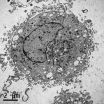(Press-News.org) In the first real-world trial of the impact of patient-controlled access to electronic medical records, almost half of the patients who participated withheld clinically sensitive information in their medical records from some or all of their health care providers.
This is the key finding of a new study by researchers from Clemson University, the Regenstrief Institute, Indiana University School of Medicine and Eskenazi Health published in the Journal of General Internal Medicine.
Kelly Caine, assistant professor in Clemson's School of Computing, and colleagues at Clemson led the human factors efforts on the project. She and her team interviewed patients about their privacy and sharing preferences and used this information to design the user interface that allowed patients to control how and to whom their medical data was shared.
During the six-month trial, 105 patients were able to indicate preferences for which clinicians could access sensitive information in their electronic medical records, such as information on sexually transmitted diseases, substance abuse or mental health, and designating what the clinicians could see.
Patients were able to hide some or all of their data from some or all providers. However, the health care providers were able to override patients' preferences and view any hidden data, if they felt the patient's health care required it, by clicking a "break the glass" button on their computer screens. When providers clicked this button, the program recorded the time, the patient whose electronic chart was being viewed and the data displayed.
In the trial, 49 percent of the patients who participated elected to withhold information contained in their medical records from some or all of their health care providers. Patients strongly desired such control, while their providers had mixed reactions. More than half believed it was OK for patients to withhold some health information. On the other hand, a quarter of providers felt very uncomfortable about not being able to see all of the information in their patients' records, worrying that it could jeopardize care.
"It is critically important to consider patients' privacy preferences about their health information," Caine said. "If we fail to design systems that meet patients' needs and desires about the extent to which their health data are shared, patients will reject them or even refuse to seek care."
The results from this trial demonstrated that patients not only say they would like control over their medical records, but actually put that control into practice when it's available.
"It is important for patients to have confidence in how clinicians and others use their sensitive health information," said Lucia Savage, chief privacy officer of the Office of the National Coordinator for Health Information Technology. "Patient-centered decision making in electronic health information exchange can inspire trust in health IT and the papers in the journal, along with this study, give us new insights on these issues."
"Our patient-centered work can inform the design of a system that preserves patient privacy and autonomy, meets providers' needs and improves care," Caine said.
The results of the trial are presented, interpreted and analyzed in five peer-reviewed research papers describing how the patient-controlled system was developed, how the trial was conducted and how patients and their providers felt about patient control; a point-counterpoint discussion written by Caine; and commentaries that comprise the supplement to the Journal of General Internal Medicine.
INFORMATION:
A team of scientists, led by the University of Toronto's Barbara Sherwood Lollar, has mapped the location of hydrogen-rich waters found trapped kilometres beneath Earth's surface in rock fractures in Canada, South Africa and Scandinavia.
Common in Precambrian Shield rocks - the oldest rocks on Earth - the ancient waters have a chemistry similar to that found near deep sea vents, suggesting these waters can support microbes living in isolation from the surface.
The study, to be published in Nature on December 18, includes data from 19 different mine sites that were ...
Chemical modifications to DNA's packaging -- known as epigenetic changes -- can activate or repress genes involved in autism spectrum disorders (ASDs) and early brain development, according to a new study to be published in the journal Nature on Dec. 18.
Biochemists from NYU Langone Medical Center found that these epigenetic changes in mice and laboratory experiments remove the blocking mechanism of a protein complex long known for gene suppression, and transitions the complex to a gene activating role instead.
Researchers say their findings represent the first link ...
LA JOLLA, CA--December 17, 2014--Chemists at The Scripps Research Institute (TSRI) have invented a powerful method for joining complex organic molecules that is extraordinarily robust and can be used to make pharmaceuticals, fabrics, dyes, plastics and other materials previously inaccessible to chemists.
"We are rewriting the rules for how one thinks about the reactivity of basic organic building blocks, and in doing so we're allowing chemists to venture where none has gone before," said Phil S. Baran, the Darlene Shiley Chair in Chemistry at TSRI, whose laboratory reports ...
Johns Hopkins and University of Alberta researchers have identified a single protein as the root of painful and dangerous allergic reactions to a range of medications and other substances. If a new drug can be found that targets the problematic protein, they say, it could help smooth treatment for patients with conditions ranging from prostate cancer to diabetes to HIV. Their results appear in the journal Nature on Dec. 17.
Previous studies traced reactions such as pain, itching and rashes at the injection sites of many drugs to part of the immune system known as mast ...
Researchers found 53 existing drugs that may keep the Ebola virus from entering human cells, a key step in the process of infection, according to a study led by researchers at the Icahn School of Medicine at Mount Sinai and the National Institutes of Health (NIH), and published today in the Nature Press journal Emerging Microbes and Infections.
Among the better known drug types shown to hinder infection by an Ebola virus model: several cancer drugs, antihistamines and antibiotics. Among the most effective at keeping the virus out of human cells were microtubule inhibitors ...
Researchers from Intermountain Medical Center in Salt Lake City have identified a new "sliding scale" model used to rule out potentially deadly blood clots in the lungs, known as pulmonary embolisms, that is more accurate than current diagnostic methods.
The new model, which factors in a patient's age, more accurately identifies a patient's risk of the often-deadly blood clots and can more easily rule out the need for additional, more invasive tests, helping to reduce unnecessary costs.
The research is published in the medical journal, CHEST.
Pulmonary embolism is ...
The engineered spring flood that brought water to previously dry reaches of the lower Colorado River and its delta resulted in greener vegetation, the germination of new vegetation along the river and a temporary rise in the water table, according to new results from the binational team of scientists studying the water's effects.
The experimental pulse flow of water was the result of a U.S.-Mexico agreement called Minute 319.
"The pulse flow worked," said Karl W. Flessa, co-chief scientist for the Minute 319 Science Team. "A small amount of water can have a big effect ...
New research helps explain a paradoxical effect of certain antidepressants--that they may actually worsen symptoms before helping patients feel better. The findings, highlighted in a paper publishing online December 17 in the Cell Press journal Trends in Cognitive Sciences, may help investigators fix the problem as well as create new classes of drugs to treat depression.
Selective serotonin reuptake inhibitors (SSRIs) are the most widely prescribed class of antidepressant drugs, and they work by increasing levels of a brain chemical called serotonin. While this boost ...
In an article to be published in the January issue of BioScience, two philosophers tackle one of the most divisive arguments in modern biology: the value of the theory of "kin selection."
Kin selection is the idea that because genes influence behavior, and because an animal that helps its relatives helps to spread genes likely identical to its own, animals will evolve to favor kin. Researchers have spent decades testing this explanation for apparent animal altruism, but in recent years, critics, notably Martin Nowak of Harvard University and the famous naturalist and ...
(PHILADELPHIA) - Researchers look to understand the causes of amyotrophic lateral sclerosis (ALS), in the hope of finding new ways to treat the disease. A new study published online today (December 17th) in the Cell Press journal Neuron shows that a common gene mutation in ALS generates a deadly protein that may cause the damage in the brain that leads to ALS.
About 5 percent of ALS patients carry an altered version of a gene called C9orf72, which in ALS patients contains hundreds of repeat sequences that otherwise are not present in normal individuals. Since the gene's ...




